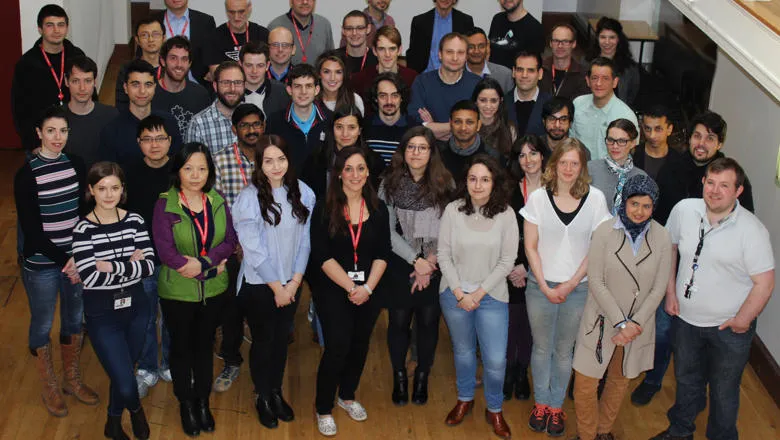04 October 2017
Two new research groups launch in Department of Physics
The Department of Physics has two new research groups, the Photonics and Nanotechnology Group (P&N) led by Professor Anatoly Zayats and the Biological Physics and Soft Matter Group (BPSM) led by Professor Sergi Garcia Maynes. The two groups are made up of members from the Experimental Biophysics and Nanotechnology Group (EBN) which has been restructured as well as new members of faculty staff.

The two new groups have grown out of the old Experimental Biophysics and Nanotechnology Group which has now split. "With the rapid growth of the Experimental Biophysics and Nanotechnology (EBN) Group over recent years, enabled by significant investment in science and technology areas at King's College London, its structure became too restrictive to fairly reflect new research interests and directions’’ said Professor Zayats, former Head of EBN. “The new P&N Group will focus on research in photonics, nanoparticles and advanced photonic materials and their applications in the 21st century technologies."
The other new group is BPSM, led by Professor Sergi Garcia Maynes, who said, ‘The Biological Physics and Soft Matter group aims to use bespoke technology and analytical methods borrowed from the physical sciences to address important fundamental questions in biology. Building up on a strong tradition in biophysics at King’s, the purpose of the new research group is to employ cutting-edge experimental and computational approaches to tackle the most exciting unresolved scientific challenges in this highly interdisciplinary field.’
These groups join alongside the existing Theoretical Particle Physics & Cosmology Group (TPPC) led by Professor John Eilis and Professor Nick Mavromatos and the Theory & Simulation of Condensed Matter Group (TSCM) led by Professor Mark Van Schilfgaarde.
Biophysics was first brought to King’s by Sir John Randall, and the Medical Research Council Biophysics Unit he started was where Maurice Wilkins and Rosalind Franklin obtained the crucial X-ray diffraction patterns from DNA that enabled James Watson and Francis Crick to construct their double helix model.
Professor Peter Main, Head of the Department of Physics, said ‘This is an exciting time for the department. We have been able to appoint a lot of talented new staff. In parallel with that, we have rearranged our research groups and now have two new groups. These two areas are strategically important for our department and our aim is to build on our already leading international reputation. Our two other research group TPPC and TSCM have also had an influx of new blood and continue to thrive at the very highest level.’
